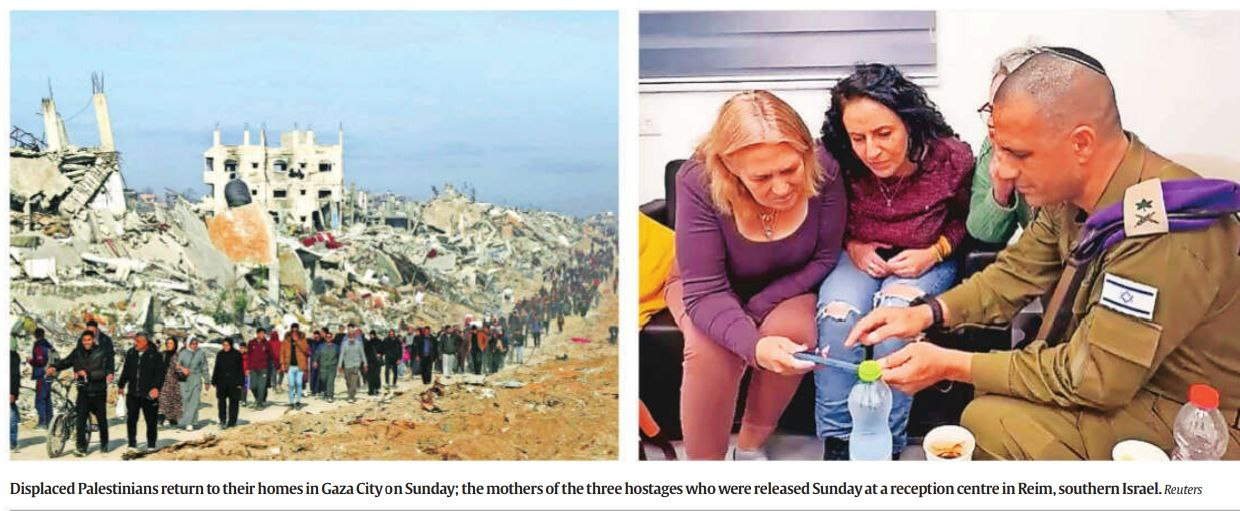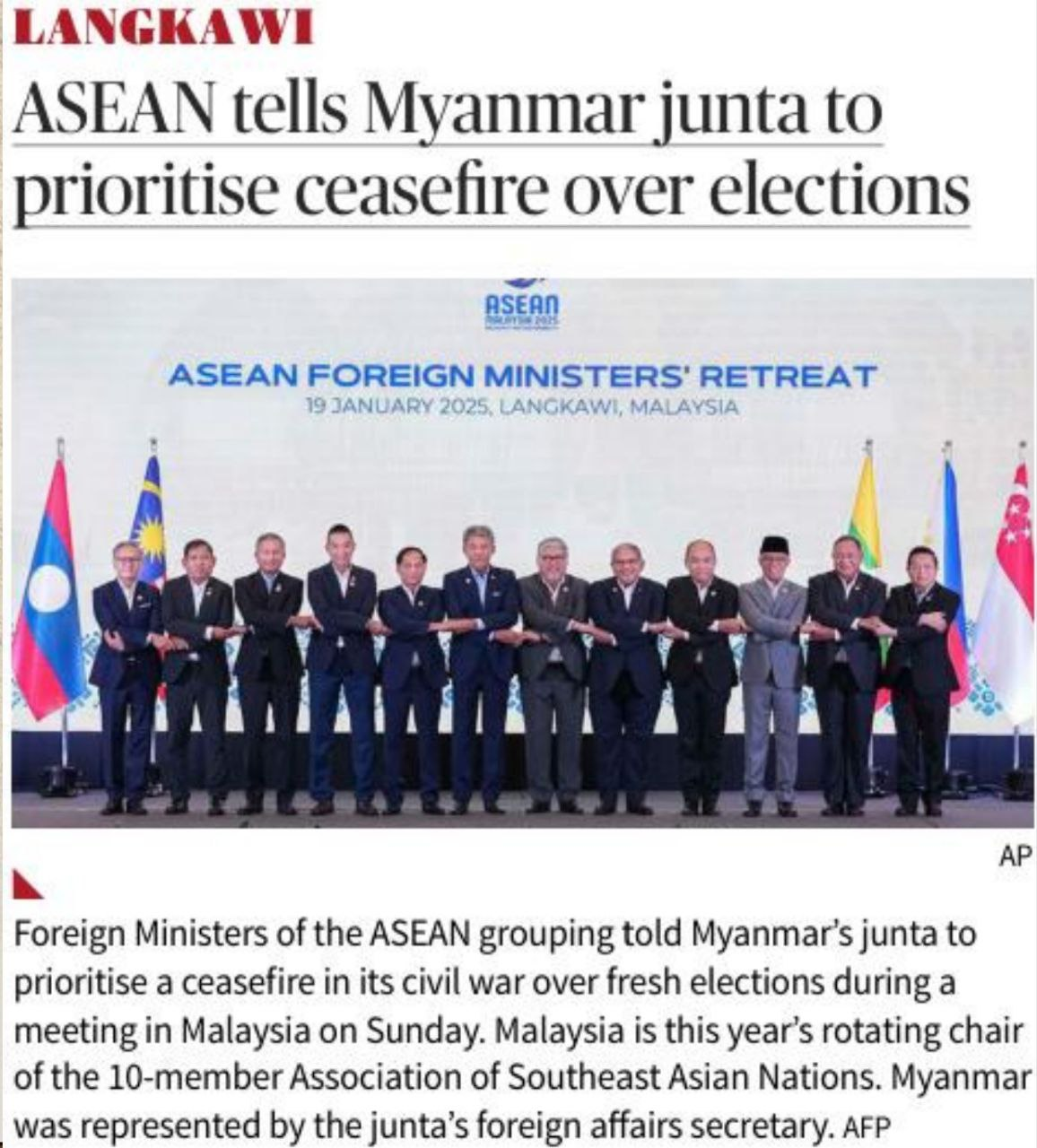Index:
- Govt. Plans to Make India Hub for Mobility Sector
- Ceasefire Deal Between Palestine and Israel
- To Fix Economy, Boost Consumption
- Murder Most Foul: Ensuring Workplace Safety for Women
- Joint Naval Drills in Strategic Indo-Pacific Straits
- Indian Navy – 15 January Inaugrations - Infographic
- How US Curbs on Russia's Shadow Fleet May Impact India's Oil Imports - Infographic
- Other new headlines
1. Govt. Plans to Make India Hub for Mobility Sector
Context:
- Prime Minister Narendra Modi inaugurated the Bharat Mobility Global Expo 2025 in New Delhi.
- Emphasis on “Make in India, Make for the World” to position India as a global leader in the mobility sector.
Key Government Initiatives:
- Infrastructure Investments:
- ₹11 lakh crore allocation in the Budget under the PM Gati Shakti Programme for multi-modal connectivity.
- National Logistics Policy to make India globally competitive in logistics.
- Electric Mobility Focus:
- Aim to reduce fossil fuel import dependency.
- Promotion of electric vehicles (EVs), hydrogen fuel, and biofuels through:
- National Electric Mobility Mission
- National Green Hydrogen Mission
- Production-Linked Incentives (PLI):
- ₹18,000 crore incentives for advanced chemistry cell battery storage.
- Renewable Energy Integration:
- Enhanced focus on solar power projects.
Highlights from the Bharat Mobility Global Expo 2025:
- Maruti Suzuki:
- Launched E-Vitara, a battery electric vehicle with a range of 550 km.
- To begin production at its Gujarat plant and export to over 100 countries.
- Hyundai:
- Unveiled Hyundai Creta Electric, India’s first indigenous electric SUV:
- Variants: 51.4 kWh (473 km range) and 42 kWh (390 km range).
- Price: ₹17.99 lakh.
- Tata Motors:
- Introduced Intercity EV 2.0 bus for long-distance travel.
- Showcased a new H.28 truck with 550 km range.
- Unveiled Hyundai Creta Electric, India’s first indigenous electric SUV:
Infrastructure for EV Ecosystem:
- Network of fast-charging stations:
- Locations every 5-10 km in top 100 cities.
- Supported by 1,500 EV-enabled service workshops.
Vision for 2025:
- Establish India as a global hub for EV manufacturing and exports.
Leverage policies to create sustainable and energy-efficient solutions.
2. Ceasefire Deal Between Palestine and Israel
Context: After over a year of war, a ceasefire between Israel and Hamas took effect on Sunday, December 2024.
- The agreement focuses on:
- Freeing hostages.
- Increasing humanitarian aid.
- Reconstruction of Gaza.
Key Impacts on Gaza
Humanitarian Situation
- Food Security:
- At least 85% of Gaza’s population is facing critical food insecurity levels:
- Crisis, Emergency, or Catastrophic.
- Food supplies significantly deteriorated after the October 7 Hamas attack.
- Daily humanitarian aid trucks entering Gaza reduced from 500-600 to just a fraction after the attack.
- As of January 15, 2025, the situation remains dire, with 98 hostages alive but 49 confirmed dead.
- At least 85% of Gaza’s population is facing critical food insecurity levels:
- Displacement and Damage:
- UNOSAT Analysis (December 2024):
- 69% of structures in the Gaza Strip are damaged:
- 60,368 structures destroyed.
- 26,920 moderately damaged.
- 34,102 possibly damaged.
- Highest damage reported in:
- North Gaza (13,388 newly displaced).
- Jabalia (14,470 displaced).
- Rafah (12,498 displaced).
- 69% of structures in the Gaza Strip are damaged:
- UNOSAT Analysis (December 2024):
Aid Status
- Humanitarian Aid Trucks:
- Before the crisis: 165 trucks per day.
- Post-crisis average: 64 trucks per day, with further reductions during intense conflict periods.
- Key focus: Stabilizing aid flow post-ceasefire to meet the dire needs of the population.
Hostage and Humanitarian Exchange
- Total hostages held by Hamas: 251.
- Status of Hostages (Chart 3):
- 16: Rescued.
- 105: Exchanged in Phase 1.
- 49: Confirmed dead.
- 81: Uncertain status.
Regional Impact
- Gaza Municipality:
- Hosts 30% of Gaza’s population but saw widespread destruction in recent attacks.
The reconstruction effort is critical to restore stability in the region and address the massive displacement.
3. To Fix Economy, Boost Consumption
Context: Reserve Bank of India (RBI) officials suggest measures to boost India’s economic growth amid global economic challenges.
Key Highlights
Challenges in Economic Growth
- Sluggish Private Capital Expenditure (Capex):
- Private capex yet to show signs of revival.
- Government capex has also slowed.
- High Food Inflation:
- Persistent “sticky” food inflation, particularly for key products, leading to double-digit price increases.
- Second-Order Effects of Inflation:
- Rising food inflation impacts firm wages, corporate salary outgoes, and consumer spending power.
Opportunities to Rekindle Growth
- Boosting Consumption:
- Encouraging mass consumer demand.
- Enhancing disposable income, especially for the middle class.
- Monitoring Food Inflation:
- A need for focused monitoring and targeted relief to address second-order effects.
- Leveraging Retail Growth:
- Quick commerce (e-commerce and q-commerce) and traditional mom-and-pop stores are bright spots in consumption trends.
Inflation and Global Economic Outlook
- Inflation Battle:
- December inflation at 22%, driven by food inflation.
- Projected easing of food prices contingent on seasonal supply.
- Global Economic Trends:
- Economy in 2025 expected to be “anything but ordinary.”
- Disinflation uneven amid monetary easing.
Upside: Weaponisation of technology and hazy interest rate trajectory.
4. Murder Most Foul: Ensuring Workplace Safety for Women
Context: The conviction of Sanjay Roy, a former civic police volunteer, for the rape and murder of a postgraduate trainee doctor at R.G. Kar Medical College, Kolkata, highlights systemic failures in workplace safety for women.
Key Highlights
The Crime
- Incident:
- Occurred on August 9, 2024, at a State-run hospital.
- Victim: A second-year postgraduate trainee doctor.
- Legal Proceedings:
- Conviction under Sections 64 (rape), 66 (causing death), and 103(1) (murder) of the Bharatiya Nyaya Sanhita.
- Possible punishments: Death sentence or life imprisonment.
- Sentencing awaited.
- Investigation:
- Central Bureau of Investigation (CBI) handled the case.
- Evidence tampering and delayed FIR filing led to inefficiencies.
Administrative Lapses
- Hospital Administration:
- Principal Sandip Ghosh arrested for evidence tampering and delays.
- Released on bail due to non-filing of the charge sheet within 90 days.
- Systemic Failures:
- Lack of basic amenities and safe working conditions for healthcare workers.
- Corruption and inefficiencies in the State-run hospital system.
Reactions
- Public Protests:
- Doctors, civil society, and activists demanded justice and systemic reforms.
- Allegations that the crime involved multiple perpetrators.
- Judicial Observations: High Court and Supreme Court of India are monitoring the case.
- Parental Appeal: Respect for the verdict but demand for continued investigation to nab all culprits.
Policy Implications
- State Government Response: Announced measures to ensure the safety of healthcare workers.
- Need for Reform:
- Strengthen policing efficiency and eliminate delays in filing FIRs.
- Improve working conditions in State-run hospitals.
- Ensure accountability in hospital administration.
Way Forward
- Focus on Workplace Safety:
- Provide secure resting facilities and basic amenities for women workers.
- Ensure stricter enforcement of safety protocols.
- Judicial Oversight:
- Expedite pending cases in higher courts.
- Hold accountable all involved in negligence or tampering.
- Long-Term Measures:
- Comprehensive policy reforms in healthcare administration.
Increased funding and monitoring of public health infrastructure.
5. Joint Naval Drills in Strategic Indo-Pacific Straits
Context
- Multilateral naval exercise La Perouse hosted by France in the Indo-Pacific region (January 16–24, 2025).
- Location: Strategic straits of Malacca, Sunda, and Lombok.
Key Highlights
Participating Countries
- Nine Navies: India, Australia, Canada, France, Indonesia, Malaysia, Singapore, United Kingdom, and United States.
- Indian Navy’s Deployment: INS Mumbai, a guided-missile destroyer.
- French Leadership: French Carrier Strike Group (CSG) led by Charles de Gaulle.
Strategic Importance of the Straits
- Choke Points:
- Critical entry/exit points connecting the Indian Ocean and the Pacific Ocean.
- Significant for global maritime trade and geopolitics.
- Chinese Forays: Rising presence of the Chinese Navy has increased the strategic importance of these straits.
Focus Areas
- Maritime Safety:
- Enhancing interoperability and collective response to maritime crises.
- Tackling risks such as:
- Maritime accidents, environmental hazards.
- Illegal immigration, drug trafficking.
- Natural disasters (earthquakes, tsunamis).
- IORIS System:
- Communication and coordination platform.
- Facilitates synchronized responses to maritime crises through real-time information sharing.
Significance
- Strengthening Indo-Pacific Cooperation:
- Reinforces partnerships among major Indo-Pacific countries.
- Enhances readiness to address emerging maritime threats.
- Trade and Security:
- Ensures the security of key maritime routes for global trade.
- Addresses human-induced and natural risks in the region.
- Strategic Balancing:
- Counters rising Chinese influence in the Indian Ocean Region (IOR).
Demonstrates commitment to a free, open, and secure Indo-Pacific.




